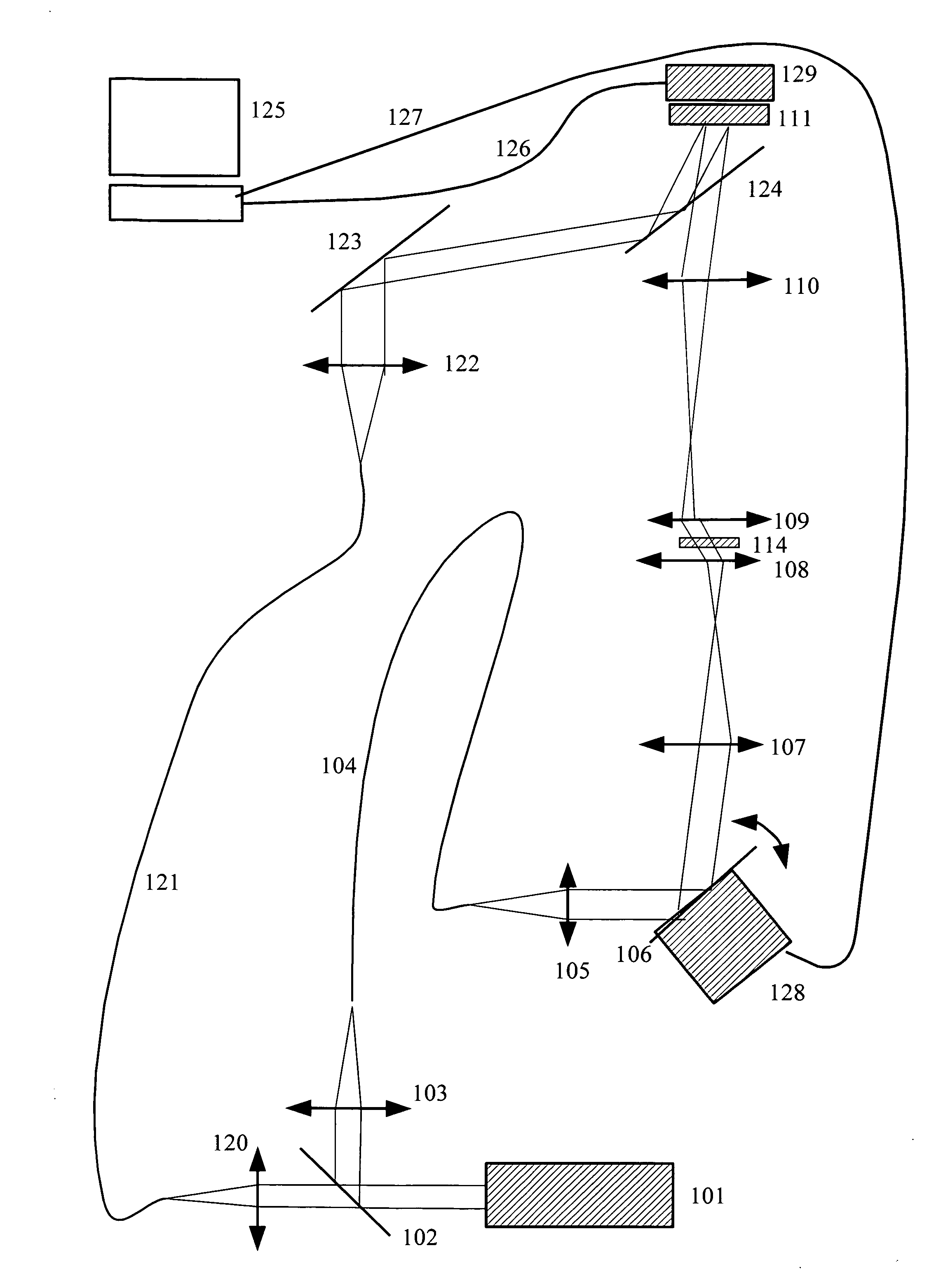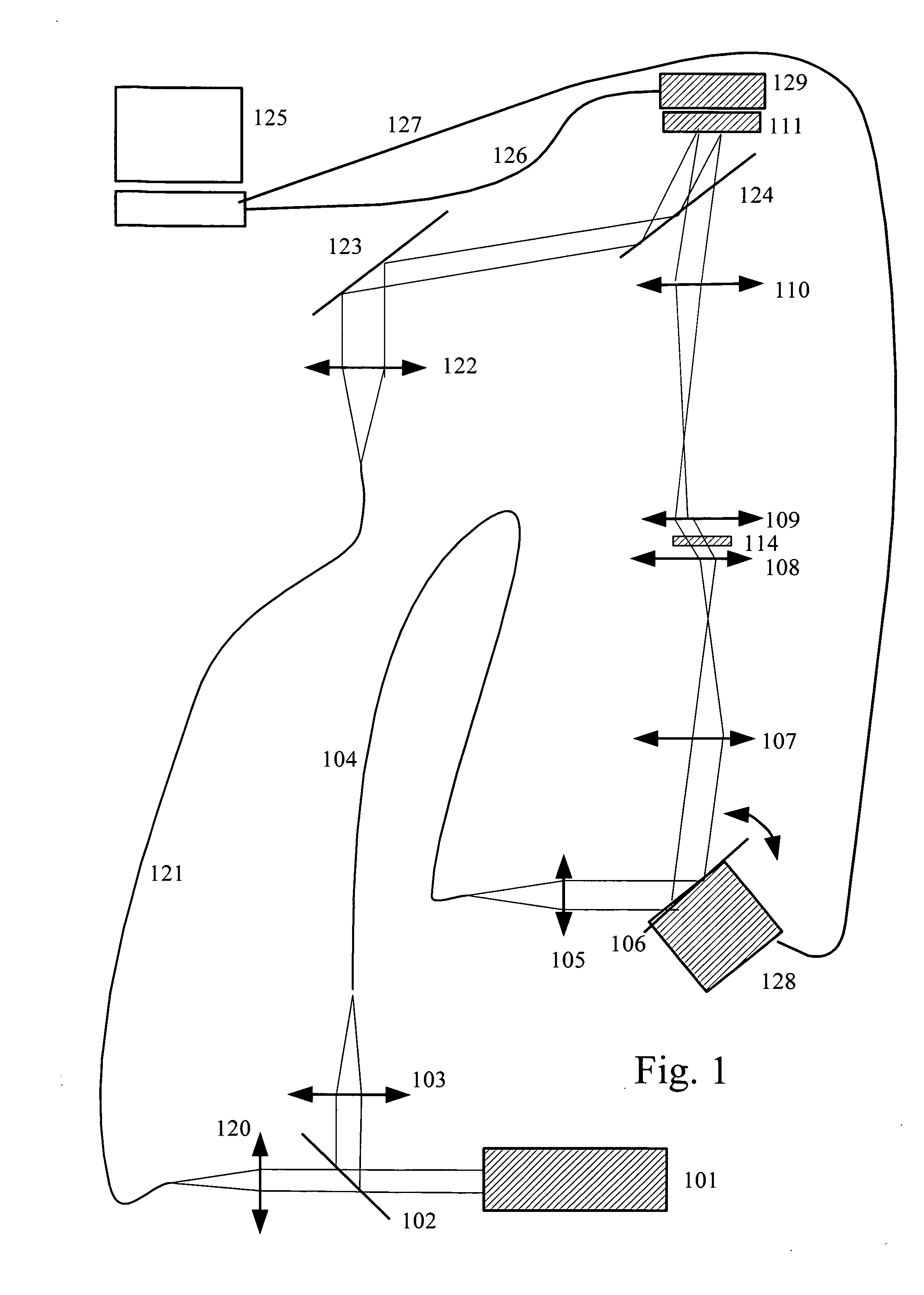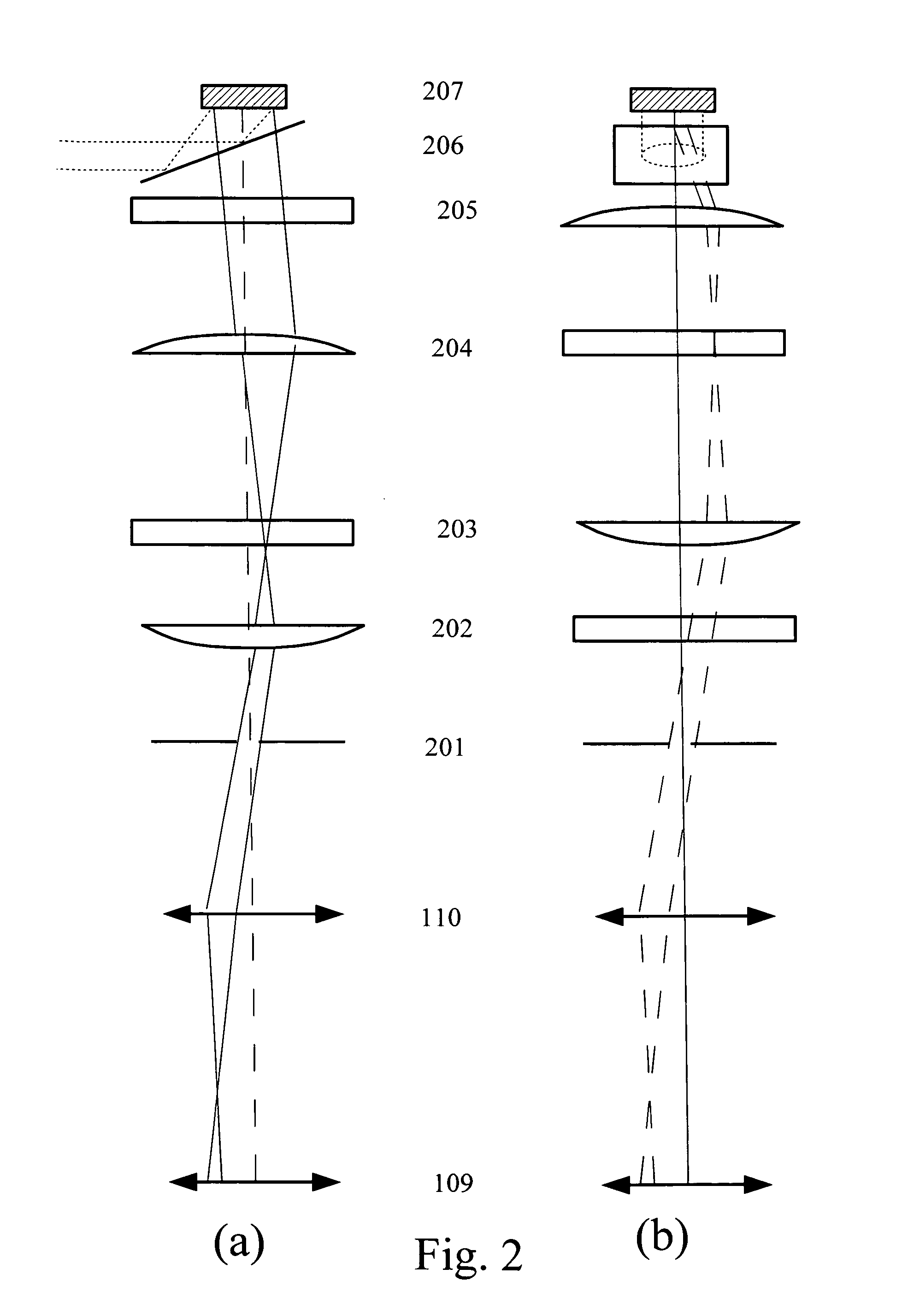Interferometer
a technology of interferometer and detector, which is applied in the field of interferometer, can solve the problems of generating vibration and not allowing simple devices, and achieve the effects of shortening the integration time of the detector, and shortening the acquisition tim
- Summary
- Abstract
- Description
- Claims
- Application Information
AI Technical Summary
Benefits of technology
Problems solved by technology
Method used
Image
Examples
Embodiment Construction
[0046]FIG. 1 shows a preferred realization. A laser 101 produces a beam which is split by a beamsplitter 102 in a reference beam and an illumination beam. The illumination beam is focused by a lens 103 on the entry of an optical fiber 104, and the reference beam is focused by a lens 120 on the entry of an optical fiber 121. The illumination beam coming out of the fiber 104 is then made parallel by a lens 105 and reflected on a mobile mirror 106 rotating around two axes. It passes through lens 107 and condenser 108 so that the illumination beam is parallel in the observed object 114. The beam diffracted by the observed object is then collected by the microscope objective 109, passes through the tube lens 110 and reaches the detector 111. The mobile mirror 106 is for example driven by two motors enclosed in a case 128 and controlled by the computer 125 through a command card (not shown) and a connection 127. The motors driving the mobile mirror may typically be stepping motors or a du...
PUM
 Login to View More
Login to View More Abstract
Description
Claims
Application Information
 Login to View More
Login to View More - R&D
- Intellectual Property
- Life Sciences
- Materials
- Tech Scout
- Unparalleled Data Quality
- Higher Quality Content
- 60% Fewer Hallucinations
Browse by: Latest US Patents, China's latest patents, Technical Efficacy Thesaurus, Application Domain, Technology Topic, Popular Technical Reports.
© 2025 PatSnap. All rights reserved.Legal|Privacy policy|Modern Slavery Act Transparency Statement|Sitemap|About US| Contact US: help@patsnap.com



